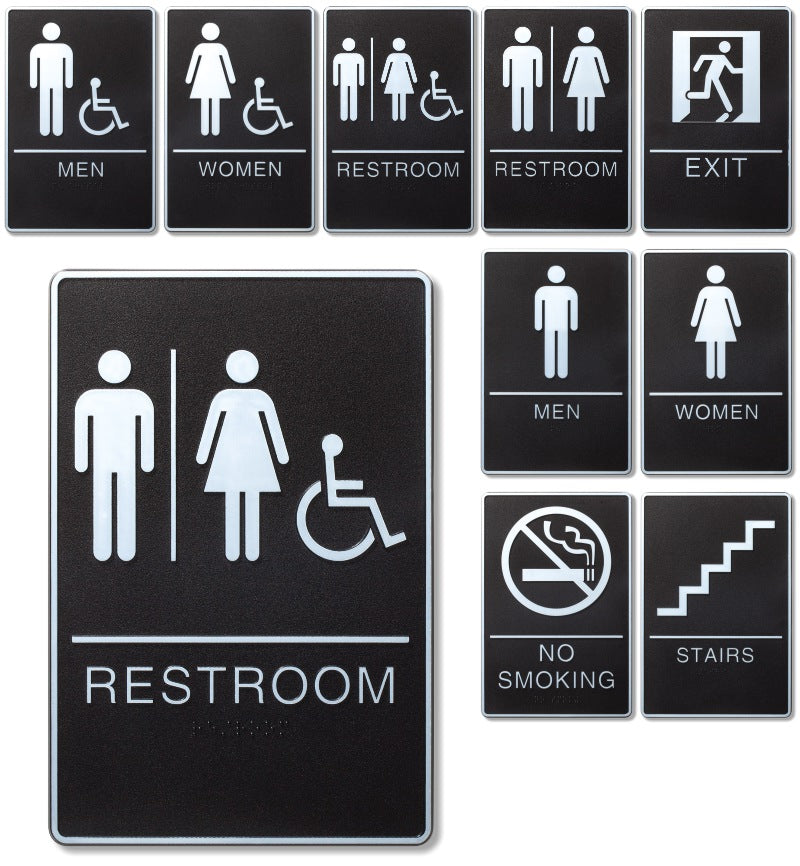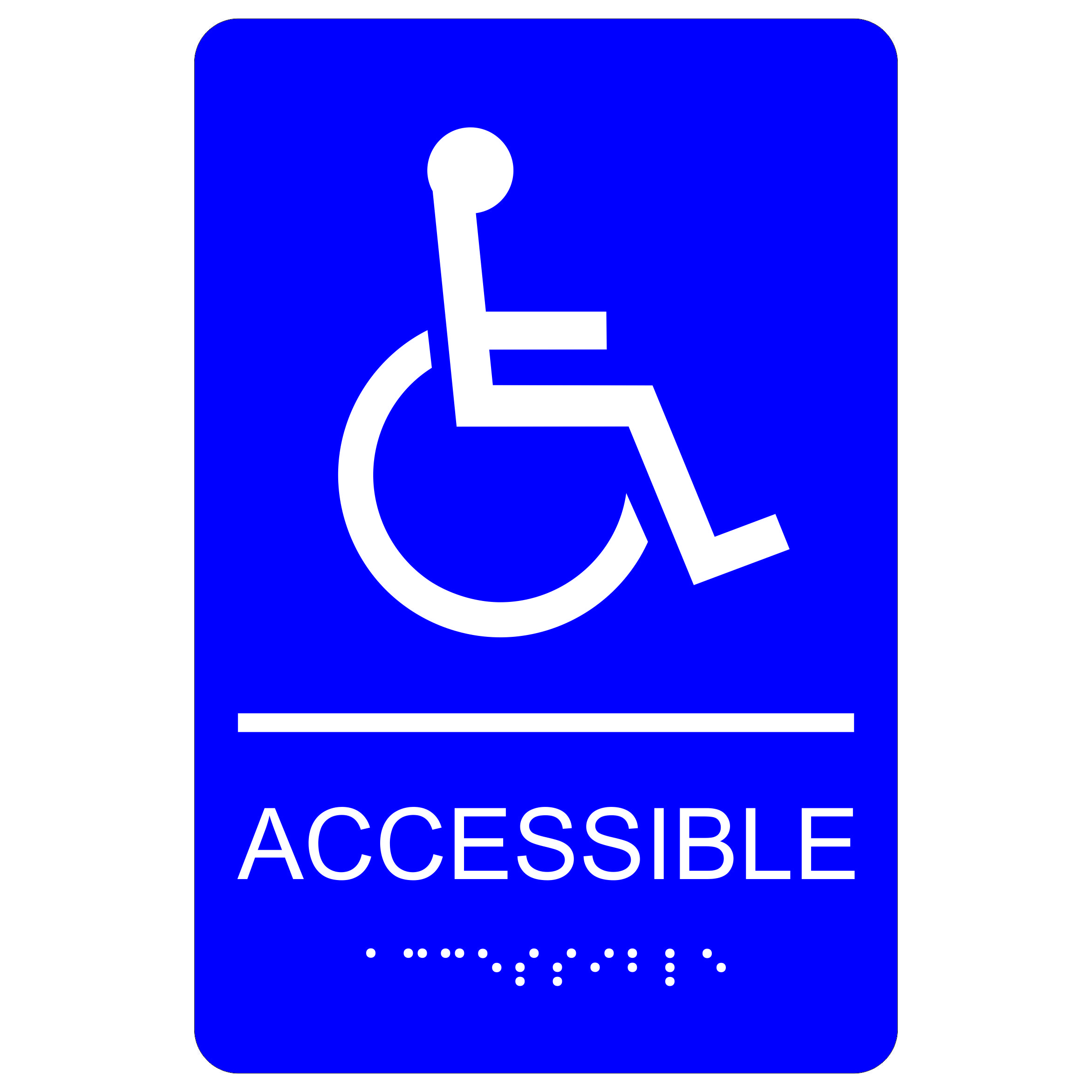A Comprehensive Guide to Selecting the Right ADA Signs
A Comprehensive Guide to Selecting the Right ADA Signs
Blog Article
Checking Out the Trick Attributes of ADA Indications for Improved Availability
In the realm of accessibility, ADA indications offer as silent yet effective allies, making sure that rooms are inclusive and accessible for people with handicaps. By incorporating Braille and responsive components, these signs damage obstacles for the aesthetically damaged, while high-contrast color design and readable typefaces deal with diverse visual requirements. Additionally, their tactical placement is not approximate however instead a computed effort to promote smooth navigating. Yet, past these features lies a deeper story about the development of inclusivity and the continuous commitment to developing equitable areas. What more could these indicators represent in our pursuit of global access?
Relevance of ADA Conformity
Ensuring conformity with the Americans with Disabilities Act (ADA) is important for promoting inclusivity and equivalent access in public areas and offices. The ADA, established in 1990, mandates that all public centers, companies, and transportation solutions accommodate people with impairments, ensuring they take pleasure in the same civil liberties and chances as others. Conformity with ADA standards not just fulfills lawful obligations however likewise enhances an organization's online reputation by showing its dedication to variety and inclusivity.
One of the vital elements of ADA compliance is the application of available signs. ADA indications are developed to make certain that individuals with disabilities can conveniently browse with structures and rooms. These indicators have to stick to details standards regarding size, font, color contrast, and positioning to assure visibility and readability for all. Correctly carried out ADA signs aids get rid of obstacles that individuals with disabilities often come across, thus advertising their freedom and confidence (ADA Signs).
Additionally, adhering to ADA regulations can alleviate the risk of lawful repercussions and prospective fines. Organizations that stop working to conform with ADA guidelines may face suits or charges, which can be both monetarily burdensome and damaging to their public picture. Therefore, ADA compliance is integral to fostering an equitable atmosphere for everyone.
Braille and Tactile Aspects
The unification of Braille and tactile elements right into ADA signage personifies the principles of access and inclusivity. It is normally placed below the equivalent message on signage to guarantee that individuals can access the information without aesthetic assistance.
Tactile aspects expand beyond Braille and include increased personalities and icons. These components are developed to be discernible by touch, allowing people to recognize area numbers, washrooms, departures, and other essential locations. The ADA establishes particular standards regarding the dimension, spacing, and placement of these tactile elements to maximize readability and make sure consistency across different atmospheres.

High-Contrast Color Systems
High-contrast color schemes play a crucial duty in improving the visibility and readability of ADA signs for individuals with visual problems. dig this These plans are important as they make the most of the difference in light reflectance between message and background, ensuring that indications are conveniently discernible, even from a distance. The Americans with Disabilities Act (ADA) mandates using particular shade contrasts to suit those with limited vision, making it an important facet of conformity.
The efficacy of high-contrast shades hinges on their ability to stand apart in different lights problems, including dimly lit settings and locations with glare. Typically, dark text on a light background or light message on a dark background is used to attain optimum contrast. As an example, black message on a yellow or white background supplies a plain visual distinction that assists in quick acknowledgment and comprehension.

Legible Fonts and Text Dimension
When considering the style of ADA signage, the option of understandable fonts and appropriate text size can not be overstated. These elements are critical for ensuring that indications come to individuals with aesthetic problems. The Americans with Disabilities Act (ADA) mandates that typefaces must be not italic and sans-serif, oblique, script, highly decorative, or of unusual kind. These needs assist Homepage guarantee that the text is quickly understandable from a range which the characters are appreciable to varied target markets.
According to ADA standards, the minimum message height need to be 5/8 inch, and it should boost proportionally with viewing distance. Consistency in text size contributes to a natural visual experience, helping individuals in navigating atmospheres effectively.
Additionally, spacing in between lines and letters is indispensable to clarity. Adequate spacing stops personalities from showing up crowded, boosting readability. By adhering to these requirements, designers can significantly boost access, guaranteeing that signage serves its designated function for all individuals, no matter their visual capacities.
Efficient Placement Methods
Strategic positioning of ADA signage is important for optimizing availability and making certain compliance with legal requirements. ADA standards stipulate that signs must be installed at an elevation in between 48 to 60 inches from the ground to guarantee they are within the line of view for both standing and seated individuals.
Furthermore, indicators should be positioned nearby to the lock side of doors to enable easy identification prior to entrance. This positioning aids people locate areas and areas without blockage. In instances where there is no door, indicators need to be situated on the local nearby wall. Uniformity in sign positioning throughout a facility boosts predictability, reducing confusion and enhancing general individual experience.

Final Thought
ADA indicators play an essential duty in promoting availability by incorporating functions that deal with the needs of individuals with handicaps. These elements jointly promote an inclusive environment, emphasizing the significance of ADA compliance in ensuring equal accessibility for all.
In the realm of access, ADA indications offer as quiet yet effective allies, ensuring that spaces are accessible and inclusive for people with specials needs. The ADA, passed in 1990, mandates that all public centers, companies, and transportation solutions fit people with impairments, ensuring they delight in the exact same civil liberties and possibilities as others. ADA Signs. ADA signs are developed to guarantee that people with disabilities can easily browse via structures and areas. ADA guidelines state that indicators need to be placed at an elevation between 48 to 60 inches from the ground to ensure they are within the line of view for both standing and seated individuals.ADA indicators play a vital role in advertising access by integrating features that see this site attend to the demands of people with impairments
Report this page